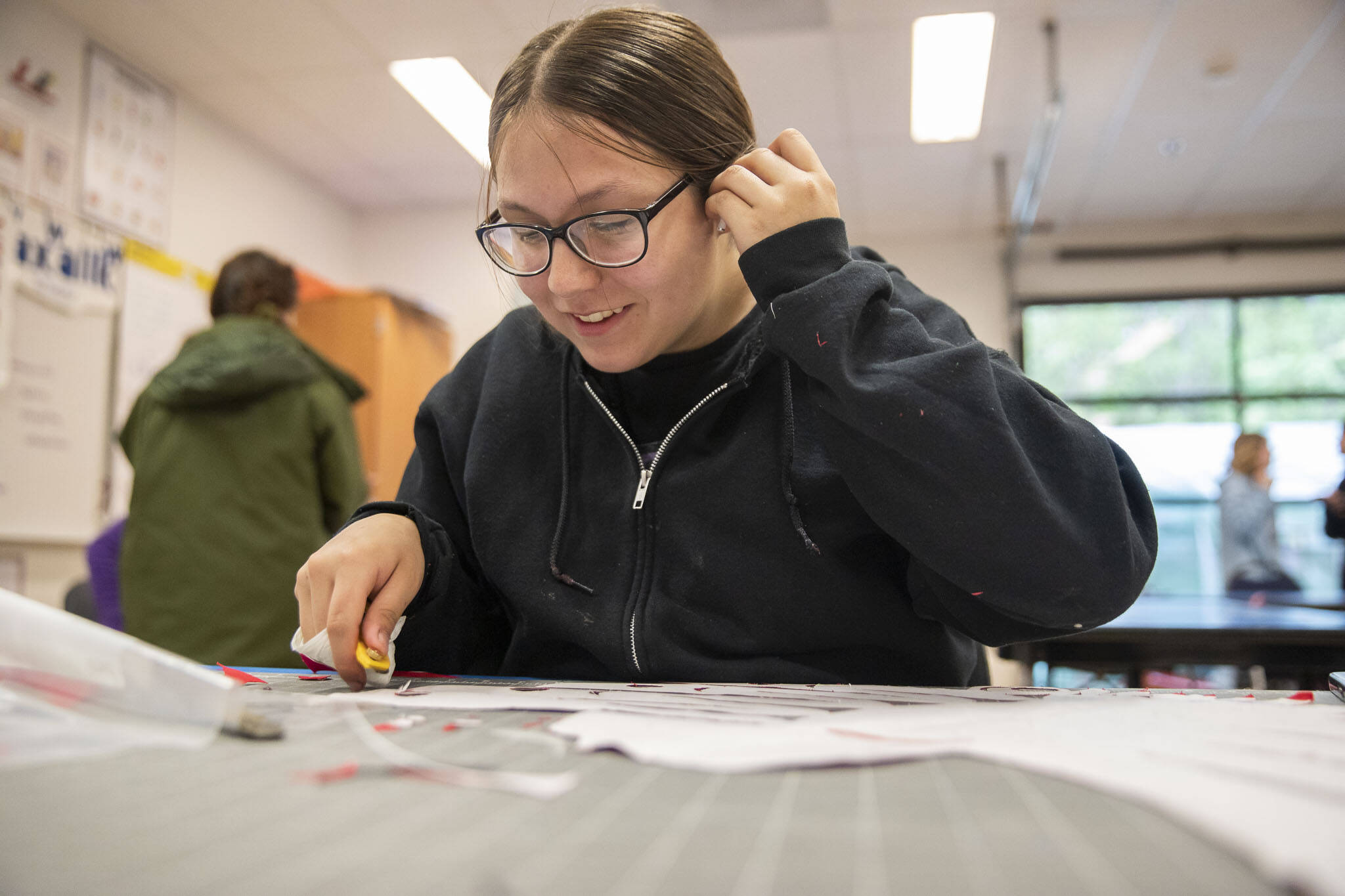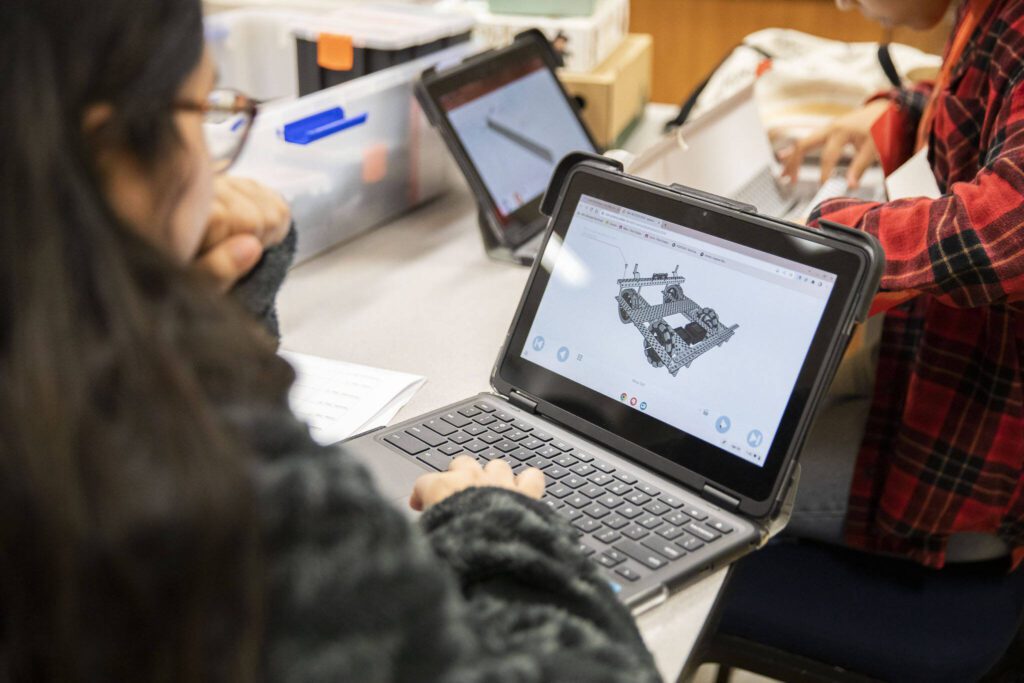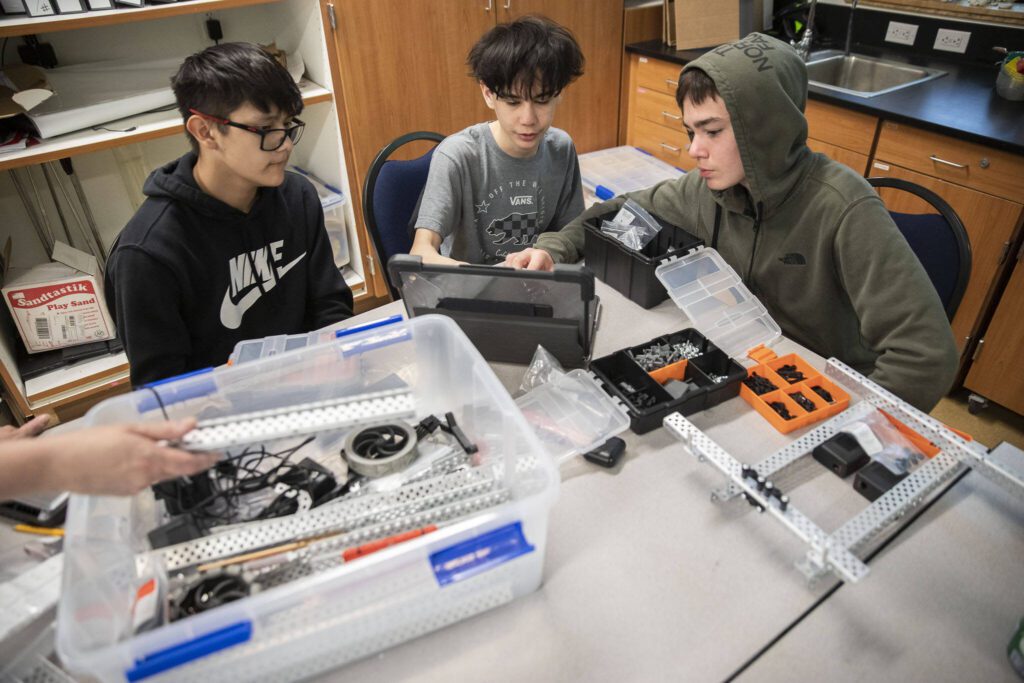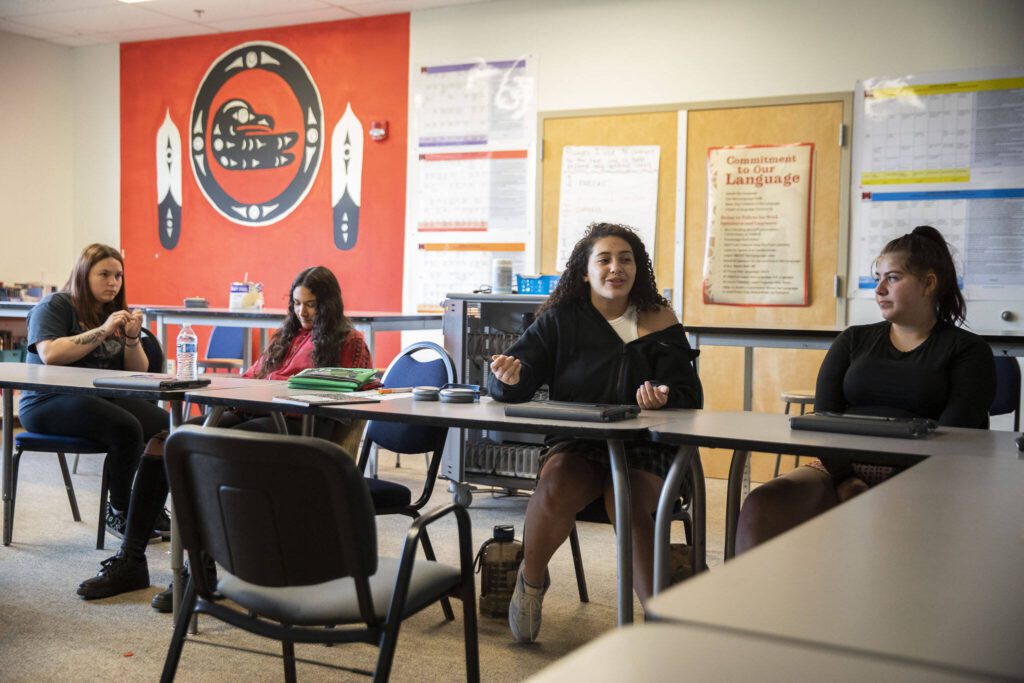TULALIP — Before Yliana Romero enrolled at Tulalip Heritage High School, she had “probably no chance of graduating,” she said.
Now, halfway through her second year at Heritage, she has created her own lesson plan about Indigenous leader Billy Frank Jr.
“I was offered a bunch of different opportunities to understand that there is a future out there for me,” said Yliana, 16. “That’s when I really started really working for myself and like providing for myself.”
In fall 2022, Heritage High School changed its approach to learning. Rather than telling students what to do, teachers now ask what they want to learn. After they decide, students spend two days of their week working at internships or learning trades to achieve their goals.
Heritage made this change through the Big Picture Learning network, a nonprofit helping over 200 schools across the world transition to a skill-based education. This fall, ACES High School in the Mukilteo School District will join Heritage as a Big Picture school.
Nathan Plummer, the principal at Heritage, said the program has increased attendance by 50%, improved student engagement and boosted enrollment from 67 to 110 students, plus a waitlist.
For now, the available state data corroborates boosted enrollment.
At first, teacher Ervanna Little Eagle was skeptical. She had taught humanities at Heritage for 16 years and dreaded “another change.” She wondered if Big Picture would leave enough time for her to transmit Indigenous knowledge. Heritage High School’s student body is 85% Native American, with 75% of students affiliated with the Tulalip Tribes.
Eighteen months later, Little Eagle said the program is helping students “thrive in the community.”
She is now an adviser instead of a teacher, helping guide students through their interests. Each adviser mentors no more than 15 students. Some of her students are learning traditional weaving techniques with cedar. An aspiring tattoo artist is working on a sketch board.
Students receive instruction in school every Monday, Wednesday and Friday. Last week, Little Eagle was teaching Native Design.
She said the program has been conducive to expanding the students’ perspectives, with more professionals coming in to talk about different careers.
‘The fabric that makes you’
Heritage advisers design learning plans with every student, Plummer said.
“We really come in like, ‘Who are you? What is the fabric that makes you? Is your culture important to you? Is your family important to you?’” he said.
Other questions staff will ask include:
What do you want this year to look like?
What do you want your high school years to look like?
What do you want 30 and beyond to look like?
Plummer said staff are able to give many resources to students through the support of the Tulalip Tribes.
The tribes partner with the Marysville School District to run Heritage. The tribes give almost $750,000 annually to pay for more staff and supplies not covered by the district’s state funding.
During the 2020-21 school year, only 10.3% of Heritage students regularly attended school, meaning they had fewer than two absences per month, according to state data. That compares to 44.2% at Marysville Pilchuck High School, 51.9% at Legacy, and 53.6% at Marysville Getchell.
But anecdotally, Plummer said, students are on their phones less and more involved outside of school. Examples of projects include learning with airline pilots, artists and tribal leaders.
Plummer, who was hired in June 2022 to help launch the program, said the goal of Big Picture is to shift away from a 19th century model of education. Today’s world needs more emphasis on communication and initiative.
‘Name, strength and need’
At Mukilteo’s ACES, Principal Blake Baird is busy cultivating relationships with businesses and organizations and asking students — prospective or enrolled — what they want to learn.
A lot of his students, for example, are interested in working on cars. A great way, he says, to learn about physics, math and politics.
In 2022, he was tasked with looking at alternative models for the high school. He drew from his experience at the Bellevue Big Picture School, where he taught for four years. ACES has always been a school where staff knew each student by name, strength and need, Baird said.
Yet he felt the education didn’t fully reflect that approach.
Like other schools, ACES has struggled in the post-pandemic era with declining attendance and graduation rates, as well as more mental health issues among students.
“The common theme with many of the students that we have is a sense of, ‘I don’t have control over my life, I don’t have agency, I have no idea or real hope for the future,’” he said. “If we can build this school to be fundamentally grounded in launching students into happy, healthy adulthoods — that hope, that aspiration and that sense of agency and capacity will improve.”
In the 2022-23 school year, just under 15% of ACES students regularly attended school, compared to 59.2% at Mariner High School and 75.9% at Kamiak High School.
Baird conceded that money for Big Picture is “tight.”
But because of ACES’ low graduation rate, the school is eligible for a state Office of Superintendent of Public Instruction grant for $50,000, which Baird said the school is likely to get for two more years. Asked about the long-term picture, he mentioned other grants amounting to “a lot more than $50,000.”
Baird, who keeps in touch with Plummer, is aware of challenges the school is likely to face. To help students who aren’t ready to find an internship, ACES will have an in-house yearbook option.
If transportation cannot be figured out, the school will help younger students without a driver’s license find alternatives closer to the school. Baird also said teachers are key to making a successful transition from a traditional model to the Big Picture.
“We are accustomed to viewing the teachers as experts who know it all, and we are explicitly moving into a role where we don’t know it all at all, we just can help you figure it out,” he said. “That’s a really big shift to make. My folks are ready to make it. They’re very excited, but it’s going to be messy and we’re going to learn.”
Aina de Lapparent Alvarez: 425-339-3449; aina.alvarez@heraldnet.com; Twitter: @Ainadla.
Talk to us
> Give us your news tips.
> Send us a letter to the editor.
> More Herald contact information.




























